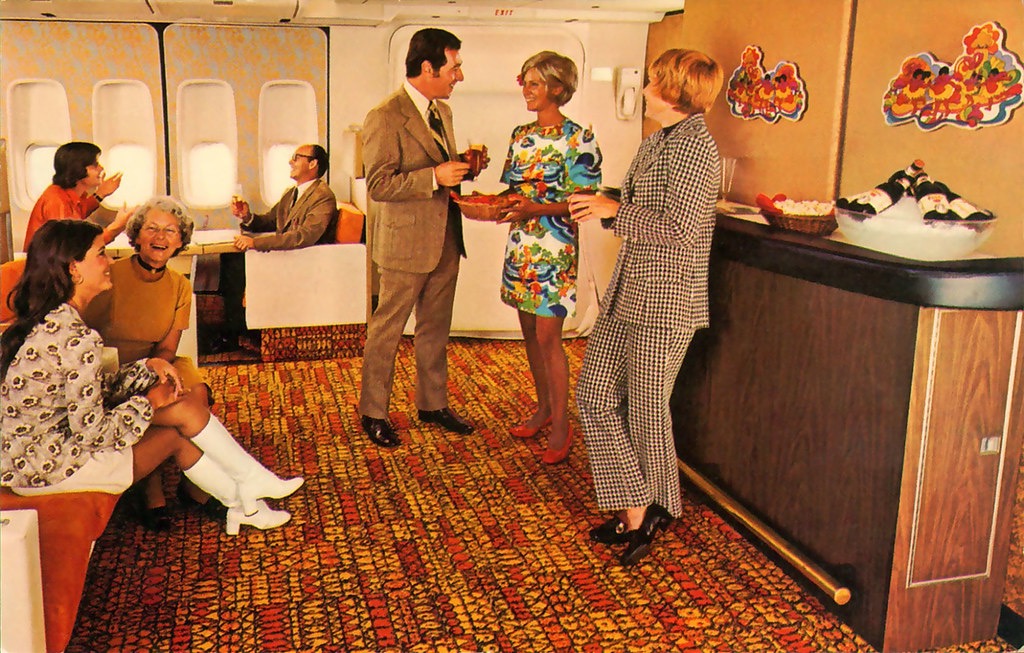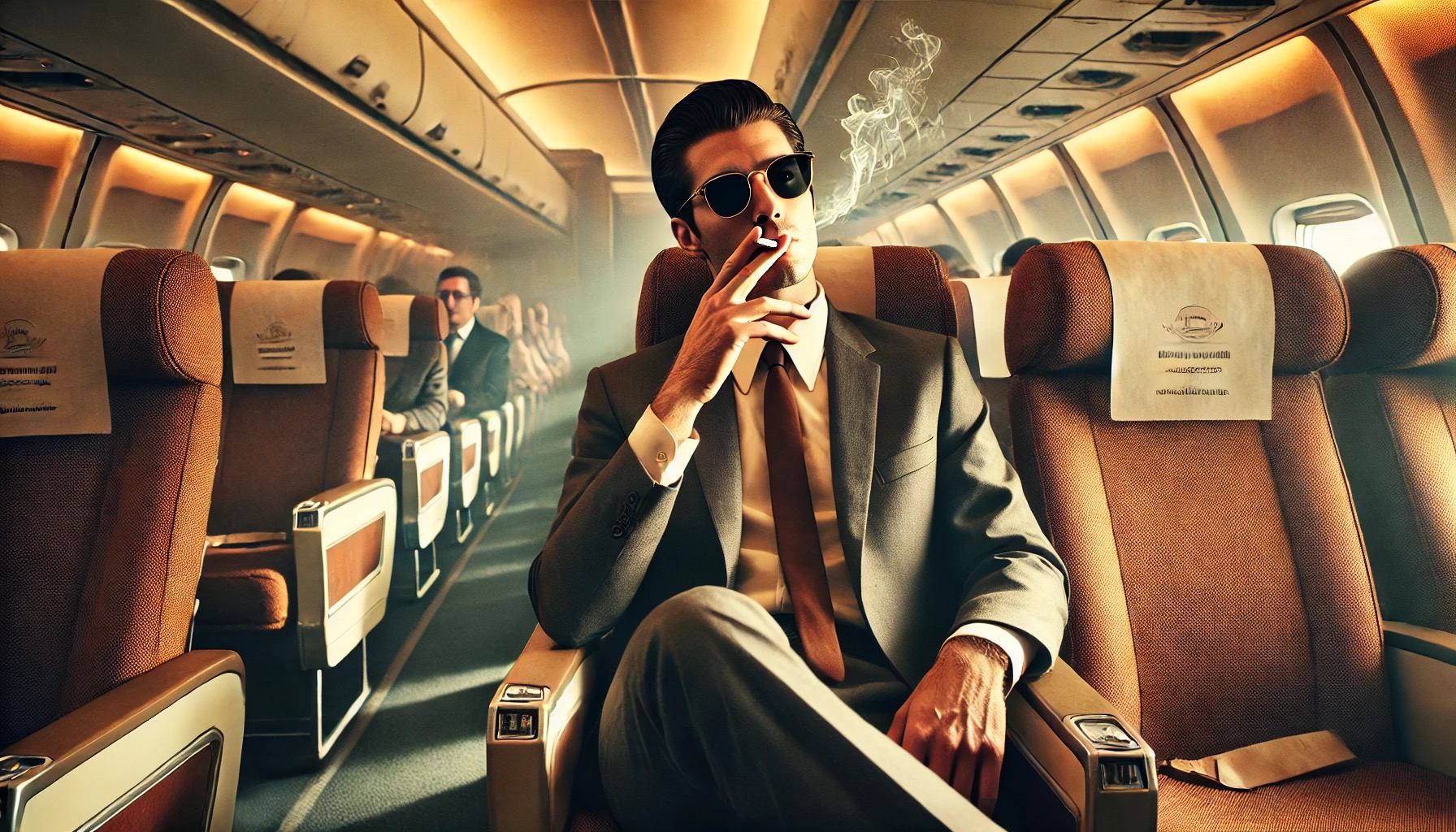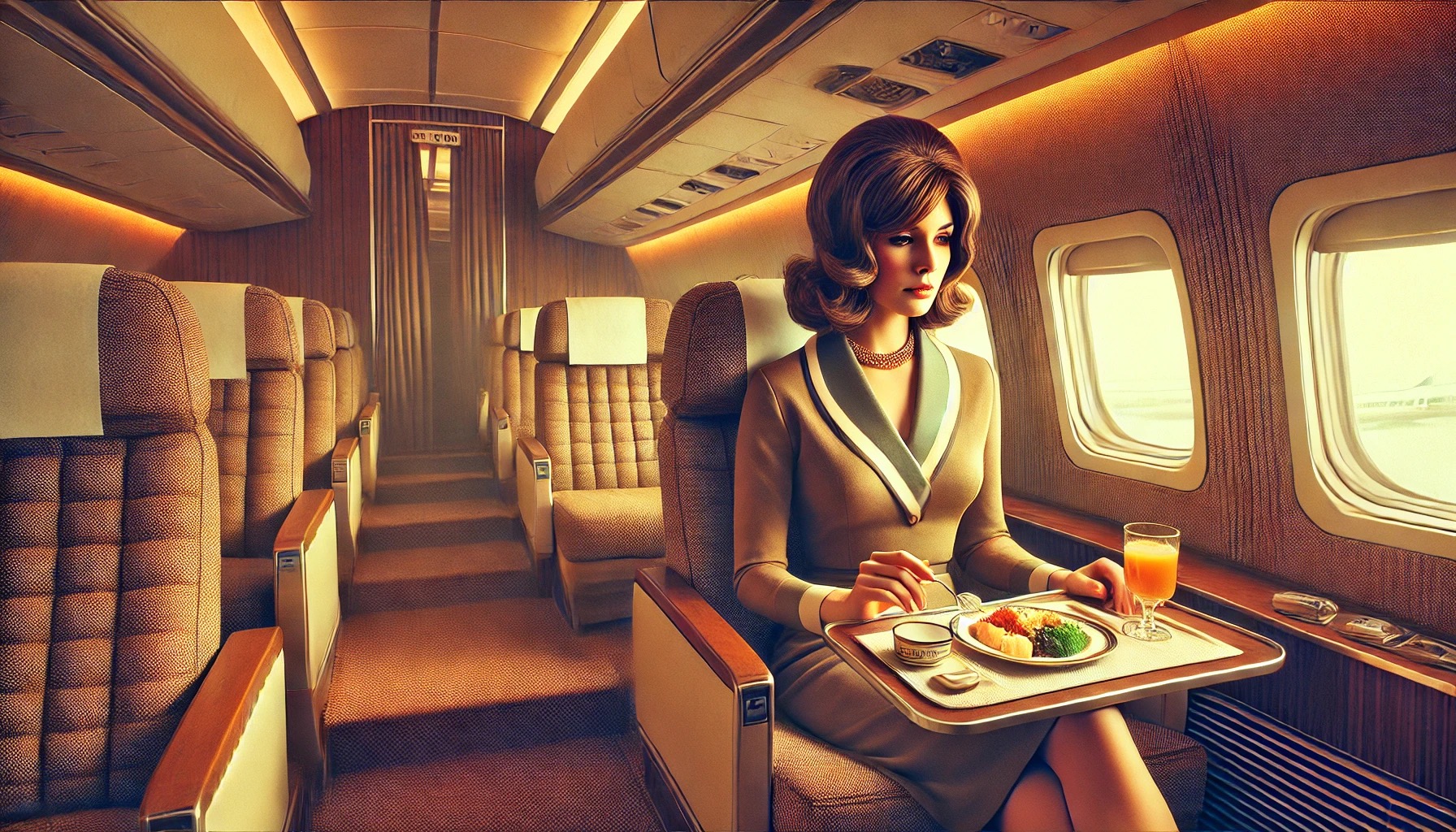
9 Absolutely Bonkers Airline Gimmicks That Would Never Fly Today
Remember when flying was glamorous? OK, maybe you don’t. I really don’t either (although I have been upgraded to business or first class a handful of times on long-distance flights). But there was a time, long ago, when airlines vied for passengers by offering fabulously unique gimmicks and services — and some of them are pretty weird by today’s standards.
There’s a simple reason why the airline industry came up with bizarre (and, in a couple cases, completely unacceptable) ideas for attracting attention to their company — things like flying piano bars, men-only flights and planes decked out like 1890s saloons.
The reason? Because before deregulation in the late 1970s, carriers couldn’t compete on price. Airfares were much more heavily regulated. So, instead of dropping fares to sell more, airlines dreamed up extravagant marketing schemes and wild in-flight services that would make today's public relations professionals choke on their complimentary peanuts.
Fasten your seatbelts as we journey through some of the industry's most outlandish sales and marketing gimmicks.

- The "Flying Piano Bar" Experience on American Airlines
In the 1970s, American Airlines installed actual piano bars in the lounges aboard some of its wide-body aircraft. Picture this: A cocktail-sipping pianist tickling the ivories at 35,000 feet while passengers gathered around for impromptu singalongs. Turbulence? Just call it jazz improvisation. The airline even employed professional pianists on transcontinental routes. Because nothing says "safe air travel" like a baby grand piano potentially becoming a very expensive projectile.
2. Continental Airlines’ "Pub in the Sky"
Not to be outdone in the airborne drinking department, Continental Airlines transformed their DC-10 coach lounges into English-style pubs, complete with wood paneling, brass railings and "pub grub." Flight attendants wore custom-designed pub-keeper uniforms, presumably resisting the urge to say, "You don't have to go home, but you can't stay here" during flight.
3. TWA’s “Foreign Accent Service”
In 1968, TWA launched its short-lived “Foreign Accent Service,” a promotional gimmick that now feels like a relic of a very different era. Passengers on select domestic flights — like New York to Los Angeles — were treated to a themed experience that aimed to channel the airline’s international image. Flights were themed as French, Italian, British or, somewhat paradoxically, “American” flavors, complete with stewardesses dressed in paper uniforms inspired by each country. Think English “serving wenches” and Parisian chic, all in the form of disposable outfits held together by Velcro, scissor, and a prayer. The idea was bold, if impractical—supply issues plagued the lightweight paper dresses, which were prone to ripping. Despite hefty advertising and logistical efforts, the promotion fizzled within the same year it debuted, leaving TWA with nothing but some shredded paper and a very niche claim to airline history.
4. Braniff's "Air Strip" — and other Sexist Marketing
Speaking of questionable fashion choices, Braniff International Airways introduced the "Air Strip" in 1965. Flight attendants would perform a mid-flight fashion show, gradually removing colorful layers of their Emilio Pucci-designed uniforms down to a final outfit. The airline marketed it as "the most exciting thing that's ever happened to air travel." Today’s fashion police — not to mention the airline unions — would likely call it something else.
And that’s not all. In one of the most infamous (and sexist) marketing gimmicks of the era, National Airlines introduced a campaign called “Fly Me,” where stewardesses were shown in risqué advertisements with suggestive slogans.
5. Lots of “Love” on Southwest Airlines
During the early 1970s, Southwest Airlines leaned so hard into the "love" theme that flight attendants wore hot pants and go-go boots while serving "love potions" (cocktails) and "love bites" (peanuts). Their ticket counters were called "love counters" and staff issued tickets from “love machines.” They even claimed LUV as their stock ticker symbol. It was less an airline and more like a flying version of The Dating Game.
6. Pan Am’s Private State Room
Pan Am, once the pinnacle of luxury in the skies, epitomized over-the-top elegance with offerings like "The President State Room," an exclusive hideaway on its Boeing Stratocruiser. Nestled in the forward compartment, this ultra-deluxe space featured just eight seats, making it the perfect private retreat for individuals, families, or small groups seeking unparalleled comfort and discretion. A favorite among celebrities, it became a symbol of the airline’s commitment to extravagant service. Equally impressive was Pan Am’s "President Special," a premier first-class experience on routes connecting New York to glamorous destinations like London, Paris, Rio de Janeiro, and Buenos Aires. Meanwhile, even the standard first-class service, dubbed "The President," underscored the airline’s ambition to elevate air travel to a presidential level. This dedication to luxury made Pan Am synonymous with sophistication and world-class travel.

7. United Airlines "Men-Only" Executive Flights
In 1953, United Airlines launched a new concept that apparently aimed to corner the market on gender exclusivity: “Executive Flights,” a category of male-only flights between New York and Chicago. Billed as “a club in the sky for men only,” these flights featured steak dinners (because, apparently, protein has a gender), unlimited cigars and — most likely — business talk tailored to an all-male audience.
Just the idea of a plane full of smokers is enough to make me prefer a Greyhound bus (and remember, all airlines had smoking sections back then, too).
The concept reflected the rigid gender norms of the era, but by 1970, the male-only cabins were grounded.
8. Mohawk’ Airlines "Gas Light Service”
Pop quiz: what do you do if you’re an airline looking to increase the appeal of your aging fleet? In the case of New York-based Mohawk Airlines, the answer was to make the planes look even older. In 1960, the carrier debuted its Gas Light Service, transforming its vintage Douglas DC-3s into something like a Victorian-era parlor. Flight attendants donned period costumes complete with high-necked blouses, ostrich feathers and petticoats that would make Mary Poppins proud. Red velvet curtains with gold tassels adorned the windows, and passengers could indulge in free beer, cheese and pretzels — and even treat themselves to a cigar for five cents. Thankfully they didn't actually use real gas lamps – even the most committed theme service has its limits.

9. Free Meals in Economy Class
This is an example of a feature that most passengers surely wish would return. Delta Air Lines claims to have been the first airline to offer free meals on discounted coach flights in the United States back in 1959 – but in today’s penny-pinching skies, if you’re flying in the back, the only way you’ll get hot food on a domestic flight is if you fork over some dough or bring it onboard yourself.
ABOUT MARK CHESNUT
Mark Chesnut is a New York City-based journalist, editor, travel industry consultant and public speaker with more than 30 years of experience. The winner of the 2019 NLGJA Excellence in Travel Writing Award, Mark is the author of the book Prepare for Departure. Follow him on Instagram!

Post a comment